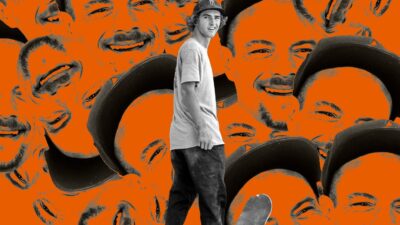Is there any other director more self-conscious with the camera than Alfred Hitchcock? The “master of suspense” has an almost pathological paranoia of voyeurism, treating the idea of being watched as some sort of grotesque object at once repulsive and magnetic. It is this strange push-pull that Hitchcock brings to the table that many of his disciples don’t even consider. There’s always an underlying layer of dread in his work, yes, but that dread is embraced like an old friend, boosted by a lightness and joy not typically found in the films of, say, David Fincher or Robert Eggers. To most directors, the mark of a good suspense set piece is when the audience wants to jolt out their seats and run away from the screen. Hitchcock was able to implement the idea that fear could have an attractive quality. PSYCHO is a literalization of this concept. Hitchcock knows that we as an audience implicitly want to be the voyeuristic Norman Bates—all he has to do is create the peephole.
It’s a bold choice, especially for 1960, to have a movie called PSYCHO and not have the titular psycho show up for about half of the plot, but this bisected structure gives Hitchcock the chance to play with perspective. In the first half, we are in the shoes of our protagonist, Marion Crane. As we progress further into the film, our perspective slowly shifts from Marion’s to Norman Bates’. I mentioned the peephole scene, which is a pretty obvious representation of that idea, but it’s also a really great representation of that grotesquery of cinema that Hitchcock was so fascinated by. We, as an audience, are participating in the voyeurism of a character we already identify with, and so the frame turns into a violation, not only of Marion’s privacy, but of our own sensibilities. Viewers are so used to looking at actors, that when the camera is turned towards them, they suddenly feel the power of their own gaze.

If all this sounds really dry and academic, then I apologize for making the film sound a lot less fun than it really is. In reality, PSYCHO is a great thrill ride first and foremost. The camera is downright balletic, dancing from one side of the set to the other, swirling around the actors, picking up one partner before smoothly moving onto another. It all adds to the grace of Hitchcock’s direction, something that a lot of his modern imitators lack. Despite being a story full of murder and violence, PSYCHO is having so much damn fun being itself that it never really bogs you down in its atmosphere. Hitchcock is a director who had an uncanny sense of what the audience experience is like. Not only is he able to manipulate his viewers, he allows them to enjoy feeling manipulated.
Compare PSYCHO to a more modern counterpart, like David Fincher’s GONE GIRL. Both are ostensibly suspense films about psychopathic killers, yet Fincher’s direction lacks an elegance that is present with Hitchcock. If the camera in PSYCHO dances, the camera in GONE GIRL is a steamroller, relentlessly driving forward with an industrialized precision. Fincher’s film lacks the human touch that Hitchcock brings but, more importantly, it also lacks the fun. Watching actors pretend to murder each other on screen is inherently a silly experience, so you might as well enjoy the artifice for what it is. There’s a certain sense of playfulness present in the works of Hitchcock that a lot of current directors forget and, as a result, these modern thrillers can often be lumbering slogs.
I keep coming back to the shot in which Arbogast is murdered. As the detective’s dying body falls down the stairs, the camera tracks closely with him, turning him into an almost ghostly-like figure floating backwards down the steps. In retrospect, it’s kind of ridiculous. But in the moment, we’re carried along by this frame, gliding down the stairs with him. Truffaut once said that Hitchcock shot love scenes like murder scenes and murder scenes like love scenes. When I think back to this one specific shot, where the camera gleefully drinks every ounce of terror and violence on screen, I’m inclined to agree.

















Comments